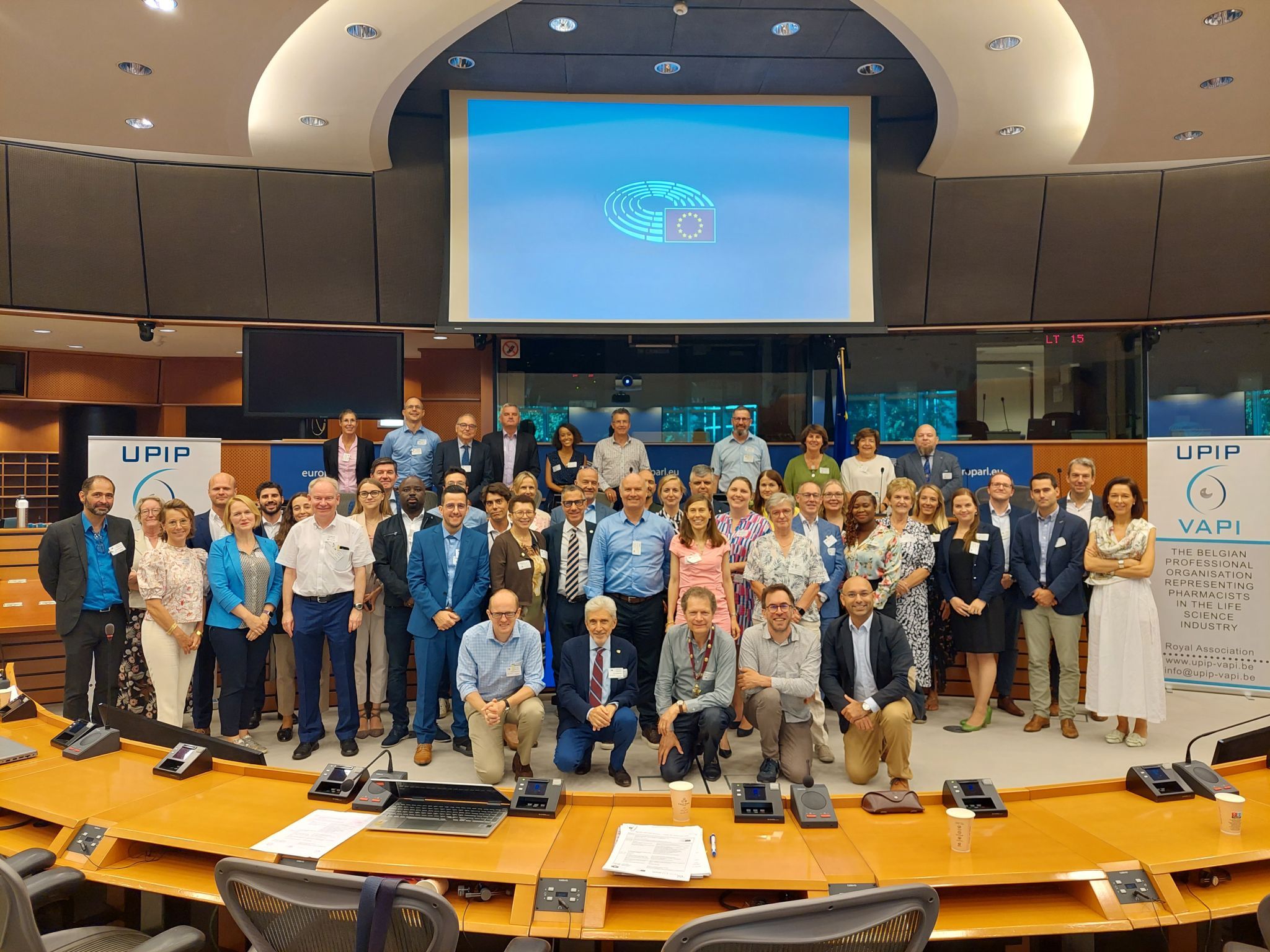by Jane Nicholson
To celebrate the 70th Anniversary of the foundation of the Belgian Association of Industrial Pharmacists (UPIP-VAPI) a Seminar on “The New Pharmaceutical Legislation” was held on 8th September in the European Parliament. The meeting was arranged in conjunction with the General Assembly of the European Industrial Pharmacists Group (EIPG) with attendance from participants of at least 15 European countries.
Frank Peeters, President of UPIP-VAPI opened the meeting and Alexia Rensonnet, a Board Member, described the new legislation as the largest reform in the past 20 years. The existing directive and regulations are to be replaced by new legislation with the objective of creating a single market to ensure all patients have timely and equitable access to safe, effective and affordable medicines whilst continuing to offer an attractive and innovation friendly market for suppliers.

Lilia Luchianov, Policy Officer at DG Sante – European Commission, said that the new legislation envisaged a leaner regulatory environment through simplification, regulatory modernisation and digitalisation. There will be access to both innovative and established medicines and incentives for innovation so that European companies remain globally competitive. Regulatory responsibilities will be shared between the EU and Member States. As well as changes to the General Pharmaceutical Legislation there will be changes to the Orphan and Paediatric legislation. Pre-authorisation support and a faster approval process including “targeted approach” rather than the current “one size fits all” are proposed.
The proposed reduction of protection for innovative products and the market launch conditions were questioned by several participants. Some of the current challenges for the Commission were said to be that pricing, reimbursement and procurement are a national competence.
In response to the current growing concerns on shortages, the Commission’s suggestions include the publication of an EU list of critical medicines, improved coordination of monitoring, earlier industry notification of shortages and withdrawals, improved industry shortage prevention plans, stronger coordination by the EMA and more legislative powers for the Member States and the Commission. During the discussion period Maggie Saykali, Director of the European Fine Chemical Group challenged the Commission to provide economic conditions for the manufacture in Europe of raw materials used by the pharmaceutical industry. Rather than dependence on China or India, European supply of raw materials would enormously improve security of supply of pharmaceuticals as well as improve worldwide environmental sustainability.
Par Tellner, Director of Regulatory, Drug Development and Manufacturing for the European Federation of Pharmaceutical Industries and Associations presented EFPIA’s views on the proposed revision to the pharmaceutical legislation. Whilst he welcomed the opportunities for regulatory modernisation such as simplification of the EMA structure by reducing the Scientific Committees from 5 to 2 and abolishing product licence renewals there are a number of challenges ahead. These include the notable reduction of research and development incentives, the added burden for industry to implement environmental risk assessments and the actual root causes of non-availability of medicinal products in the markets of Europe.
Jean-Paul Pirnay, head of LabMCT, Queen Astrid Military Hospital presented the past present and future of bacteriophage therapy. Wherever you find bacteria, you find phages which have been used since 1923 with the establishment of the Phage Institute in Tblisi (GEO). Although abandoned in the West many years ago, the Russian USSR has kept using phage therapy. Some isolated laboratories have been further developing and using phages and it has been shown that you need a handful of phages to target one bacterial spp.
Jean-Paul’s laboratory has helped establish a phage bank in a controlled environment. A single phage API can be produced according to a monograph. Individual phages can then be mixed together to target a particular bacterium. 100 seriously ill patients with resistant bacteria have been treated in 35 hospital of 29 cities and 26 phages were found to be needed. Eradication of the target bacterial infection was found in 61% of cases. In addition, phages were found to be synergistic when used with antibiotics. Jean-Paul considers commercially viable broad spectrum phage cocktails may be produced in the future.”
Geert Verniers (Lector SCM and Researcher BM-expertise center VIVES University) and his colleague described the use of Drones in the transportation of medicinal products,biological samples and tissues. With traffic congestion on roads causing gridlock around many hospital centres and personalised medicines needing urgent delivery from one area to another, the use of drones for professional transportation is compelling. Various significant points for consideration were discussed. These included the type of drone, drone pilots and Cargo Ports, the design of routes and the complexity of regulation, environmental impact, vibration problems and temperature control.
Following a lengthy discussion period, Frank Peeters thanked the speakers for their interesting contributions and all those responsible for this meeting being held in the European Parliament.